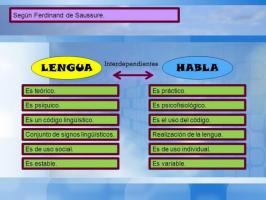What is INDIRECT speech

In the stories or tales we read we always find a dialogue or a way in which what someone says is represented. When we talk about this interaction between interlocutors (sender and receiver or speaker and listener) we speak of speech. Within this discourse, which is based on what someone says and how they say it, we find two types: direct and indirect.
Although we will talk about it in this article, we invite you to visit our article on direct speech. Likewise, knowing the importance of discourse and dialogues in the stories we read, in a teacher we will know what is indirect speech with examples. How interesting!
To know what indirect speech is, we must be very clear what is direct speechto. Direct speech is a literal way of reflecting what someone says, usually in quotation marks (“…”) or hyphens (-… -). We have seen it millions of times in countless stories, novels, etc. An example of this direct style would be:
It's been a long time since I had a good hamburger- said Andrés.
However, the indirect style, although it expresses the same thing, manifests itself in a different way. And it is that, as its name indicates,
indirect style expresses and interprets what someone says indirectly. That is, someone formulates what another person said before. In this case, no hyphens or quotation marks are used, but the verb tense of the sentence usually changes. As for the previous example of the direct style, its corresponding in indirect style would be:Andrés said that he hadn't had a good hamburger in a long time.

Now would come the time to know the guidelines to formulate the indirect style of speech in order to understand it better. With the following guidelines we refer to the change that we must make when going from a speech in direct style to its version in indirect style.
Adverbs of place move away
This means that the adverbs of place that we find in the direct style such as: here, there, this, that, that, there, etc. They are usually exchanged for one that expresses more distance.a, unless you stay in the same place when formulating the indirect form.
The same is also true for verbsSince, despite the fact that sometimes the same interlocutor indirectly repeats something he said in the past, it is not always the same person who makes a direct speech indirect. For this reason, we normally go from the first person singular to the third person singular, although it does not always have to be this way.
Let's see some examples:
- Direct style:-I have many memories in is house- said Juan.
- Indirect style:Juan said that I had many memories in that/this home.
- Direct style:-I like it much to be here- Luis said.
- Indirect style:Luis said that likes much to be here.
- Direct style: -Tomorrow i go to see you- I say.
- Indirect style:I have said that I'm going tomorrow to see you.
- Direct style:-Eastit is the best car of all- said Sandra.
- Indirect style:Sandra said that thatwas the best car of all.
Time is also moving away
In the same way that it happens with space, time must also be adapted to indirect speech when interpreting it from a direct speech. Thus, time adverbs like today, tomorrow, yesterday, last night, etc., and the verb tenses should be changed to match the time that has passed since the direct speech was formulated. And this occurs because, in indirect discourse, we are doing mention of what someone said in the past. There are some guidelines to make that temporary change in terms of verb tenses, but we will not focus on it now, since it would be too messy.
Knowing that adverbs of time and verb conjugations must adapt to the time that has passed since the sentence that we are interpreting indirectly was formulated is enough for us. Of course, as we have seen in the case of adverbs of place, it may also be the case that the style Indirect is formulated at the same time as the direct one, so the adverbs and tenses would not be changed verbal
Let's see some examples:
- Direct style:-Todaydoes very cold - Francisco announced.
- Indirect style:Francisco announced that yesterday did very cold.
- Direct style: Today we had a few problems- said the cook.
- Indirect style: The cook said that that dayhad had a few problems.
- Direct style: -Tomorrow we will buy a new one- she said.
- Indirect style:She said that today we would buy new one.
- Direct style: -I am today tired of so much work- says Salvador.
- Indirect style:Salvador says that today is tired of so much work.
Indirect speech words
There are some words that are very common in indirect speech and almost indispensable:
That: The word that It is usually used to introduce what that person to whom we refer in the indirect style has said:
- Direct style: "I'm going to dance for a while," Elena said.
- Indirect style: Elena said that she was going to dance for a while.
Yes: The word Yes is used to introduce questions in indirect style:
- Direct style: -Is it very cold? - she asked.
- Indirect style: She asked Yesit was very cold.




